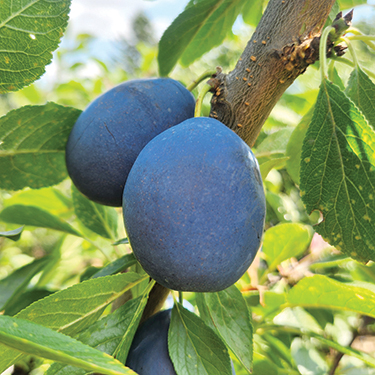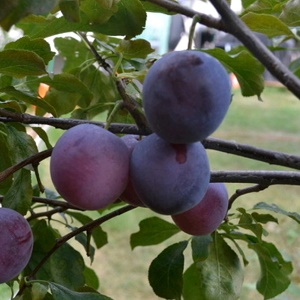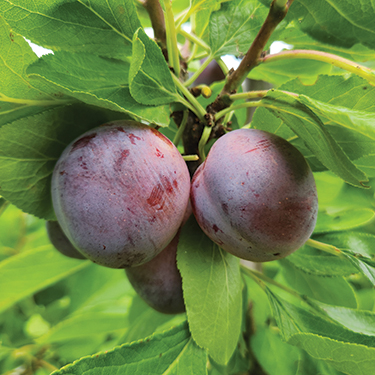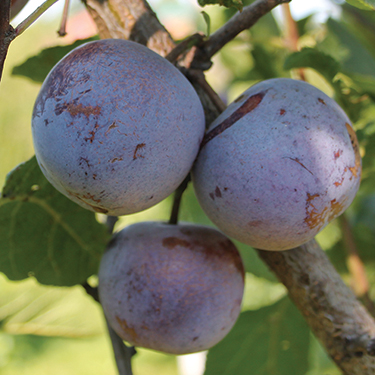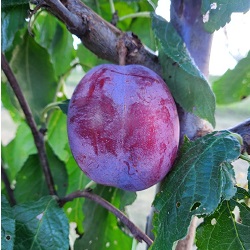Due to CFIA regulations we cannot ship plants outside of Canada and cannot ship fruit trees or grape vines to BC.
European Plum : CASTLETON™ Semi-Dwarf (Myrobalan)
$61.95
Castleton™ comes out of the Cornell University research program. Since it's release in 1993, it has become known as the sweetest of the early ripening Europeans. This mid-size, high-quality, deep blue plum will colour up well before maturity, so your best bet is to check them by biting into one to determine when to pick. Castleton™ is considered a dual-purpose variety – a fine early dessert plum, but also excellent for processing or drying. The tree is a somewhat slow grower, with a spreading pattern, but is a consistent heavy producer.
SELF-FERTILE | ZONE 4 | HARVEST: EARLY SEPT.
European Product Overview
Plums (Prunus spp.)
Plums come in a wide range of shapes, sizes, colours and flavors. They are possibly the easiest stone fruits to grow. Most varieties are relatively compact with a shrub-like growth pattern. Please note: European and Japanese plums do not cross-pollinate.
European Plums
European plums bloom later than Japanese varieties and have firmer flesh. Good for drying, canning and preserving as well as fresh eating. They are very productive but may take a year longer to begin bearing. We’ve selected the most black knot resistant varieties.
1.25-2m (4-6 ') bareroot trees
Other European
Browse other products in this rootstock and zone.
